1933… A very interesting year for the Mexico Silver Peso
by Scott Doll

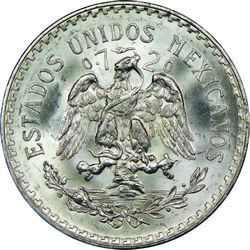
In this article, I would like to delve deeper into some of the things which I have observed on the Mexico silver 1 peso coinage. I would first like to state that this is not going to be an in-depth analysis and it will not conclude with an all-encompassing detailed list of all known varieties. Instead, this is simply going to be a review of some of the more noteworthy attributes seen on the 1933 one peso. More specifically, attributes in the date. I know this may be a bit too specific - simply focusing only on the date, but 1933 was something of an anomaly year. For some reason I have observed many more date variations than any other year in the silver one peso series in 20th century Mexico. I cannot explain exactly why this is so, but one thing is for sure, there are a lot of date varieties for 1933 out in the market just waiting to be found and snatched up by collectors.
Like many numismatists, I started my Mexico collection by focusing on a type set of the 20th century coinage. The 1933 was a good coin for the peso slot since it was available in high grade due to the relatively high mintage (43,920,000), third highest for this series. This could also partially explain the large number of varieties. I was fortunate and found one in BU, then put it away while I continued pursuit of other coins. Once I had a relatively complete type set, I decided to pursue a set by date and denomination which I must admit is still far from complete. As many of you know, our collecting pursuits never really ends, hence becomes a lifelong endeavor.
Back to 1933. While looking at other years to fill the open holes in my collection, I started to see not only dates I needed, but also additional high grade 1933’s which had different date attributes than was seen on the coin I originally purchased. This was also something seen for other silver pesos from the 1920’s and 1930’s, but not to the extent that I was seeing on 1933 dated coins. This large number of date differences could be due to the high mintage previously mentioned, but also the fact that the mint was still manually punching the date digits into the dies. This certainly leaves many variations possible for the collector. After a while, I started to buy these different date varieties and the quantity of 1933 coins grew significantly in my collection.
The examples that follow are a sampling of some of the date varieties which can be easily found on the internet, in coin shops or at the various coin shows. Each date variety can be seen highlighted in red on each date example. If you are a collector of 20th century Mexico, I am sure this information will not be new to you. However, if you are not yet a collector, this information may help provide you some insight as you begin your efforts to grow your collection.
"1" digit
The “1” digit is the first one to be discussed. Based on my observations it is by far the most repunched digit for this year. Many variations can be seen including simple digit repunches, inverted digit repunches and finally, high and low digit punches.
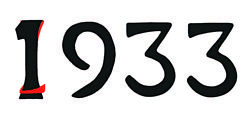
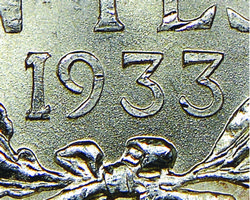
Repunched 1 over inverted 1
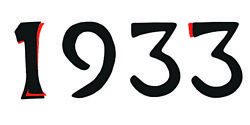
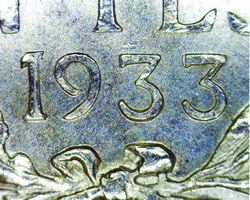
Repunched 1
Also, slightly repunched 3 (second) is visible on this plate example
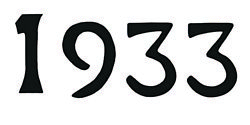
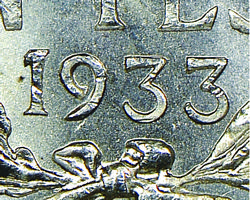
High 1
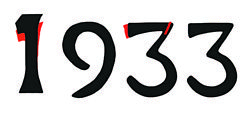
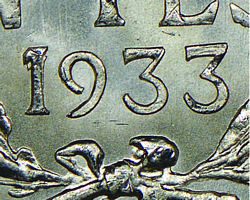
High 1 punched over an even aligned 1. Also, slightly repunched 3 (first) is visible on this plate example
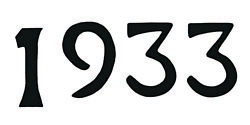
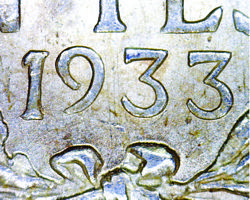
Low 1
"9" digit
The next date digit to be reviewed is the “9”. This one appears to have the fewest varieties compared to the other date digits. It can be found with simple digit repunches along with a high date digit. I am certain other varieties exist though I have not yet come across them.
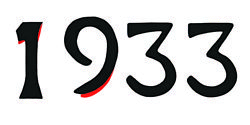
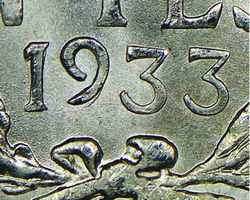
High 9 punched over an even aligned 9
Also, slightly repunched 1 is visible on this plate example
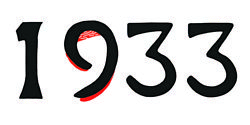
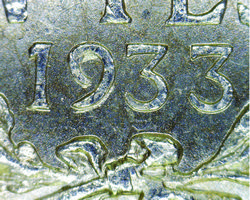
Repunched 9
Also, retooling visible below the top curve portion of the 9 digit
"3" digit
The next date digit to be reviewed is the “3”. Based on what I have seen, this digit has the second most varieties observed and documented. There is even an over date which is currently attributed to be a 1933/2. However I feel that is questionable.
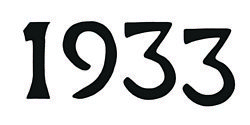
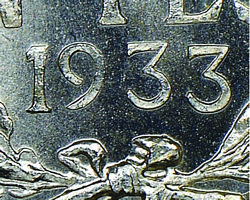
Low 3
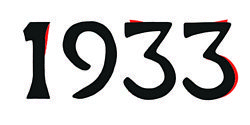

Repunched 3’s, example #1
Also, slight repunched 1 is visible on this plate example
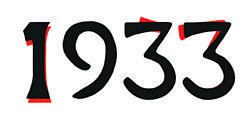
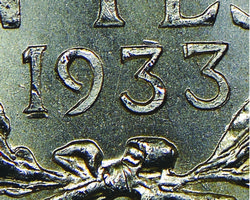
Repunched 3’s, example #2
Also, strong repunched 1 is visible on this plate example
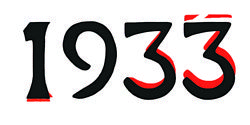
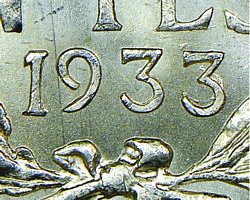
Repunched 3’s, example #3
Also, slightly repunched 1 is visible on this plate example
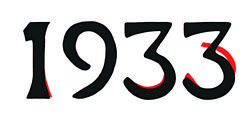
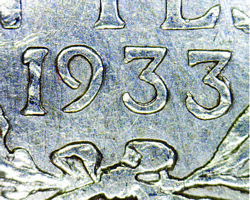
Repunched 3
Also, slightly repunched 1 and 3 (first) are visible on this plate example
The following coin is special and one of my favorites on the list. Originally, this coin was catalogued in my collection as a possible double strike. I then put it away and did not look at it until recently when pulling together scans for this article. After looking at it in more detail, I am now of the opinion that the attributes for each digit of the date have been repunched, hence they are part of the coin die and it was not due to any double strike or even hub doubling.
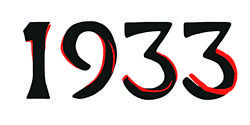
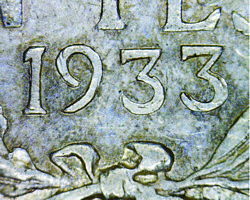
All digits show some level of repunch
For many years, many numismatists and dealers have attributed the following coin as the elusive 1933/2 overdate. After close examination, it is easy to see the alleged overdate is simply a die crack which can be seen at the base of the first 3. Early strike coins show a thin faint bar (die crack) which gives the appearance of the bottom portion of a 2 digit which certainly contributed to the confusion and misattribution. Later strikes like this one below are broader and help to identify it more easily as a die break.
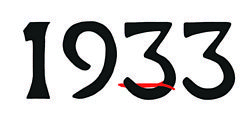
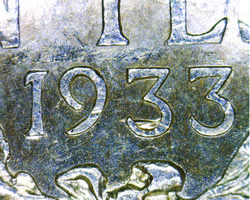
Strong die break at the base of the first 3
The following coin is somewhat controversial as well since both of the major grading agencies (NGC and PCGS), as well as many collectors and coin dealers attribute it as the 1933/2 overdate. Upon closer examination and using an inverted overlay of the 3 digit, I feel relatively certain this coin is a 3 over an inverted 3. Many die marks can also be seen directly above and around the digit where it appears the mint obviously worked hard to hide their mistake. No evidence of the top of the 3 is visible at the base, only in the middle and up towards the top of the 3 digit.
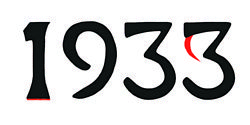
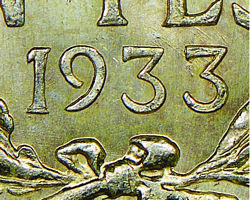
Repunched 3 over inverted 3
Also, slightly repunched 1 is visible on this plate example
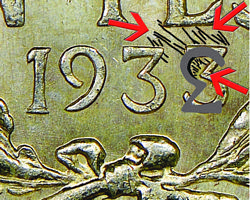

First photo shows the inverted 3 overlay in gray along with the curve highlighted in black. The many die scratches have also been highlighted. Second photo has the overlays removed.
Further study and analysis may be needed to confirm my hypothesis, since many may still believe this to be the 1933/2 overdate. For the purpose of this article, my analysis declared this particular variety to be a 3 over inverted 3. As for an authentic 1933/2 overdate, I have yet to see a coin which I feel has the attributes of what I would formally conclude to be a true 1933/2.
Although this article only focused on 1933 sampled coins, many other years in the silver peso series also have similar repunched date digits, though not to the extreme that is seen on 1933 dated coins. Also, look hard at other 1933 dated coins from Mexico, especially the 10 and 20 centavos coins where you will easily see many similar attributes as reviewed in this article.
I am not sure why 1933 is so poor in regards to die and mint quality, but I am certain that whoever was responsible did not stay employed at the mint long. They were reassigned to another job or even possibly trained to do the job the right way since the subsequent years saw a significant drop in the number of date varieties. They certainly exist, but to a lesser extent.
Summary
To the avid collector of this series and all of the associated varieties, most of the examples that have been presented here will not be a surprise. In fact, I am sure that many of you already have other date variety examples which are different or possibly more extreme than those presented in this article.
For the record, the 1933 peso is not a rare or scarce coin and can easily be found in your local coin shops, at coin shows and on the internet for a very reasonable price, usually around $20-$30 for an uncirculated specimen. Some of the varieties may come at a premium due to scarcity and simply due to the fact that there are many collectors out there who are actively looking for coins such as these. From a dealer perspective, most do not even attribute the date varieties which makes for some fun searching and dealing once you find one. I am most certain that there are many gems still out there waiting for the right collector to find them and snatch them up.
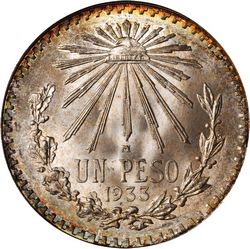
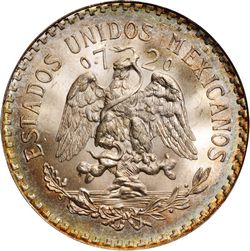
KM-455. $1 1933/2 overdate. (Stack's Bowers Winter 2014 Baltimore Auction, lot 681)
As for the so-called 1933/2 overdate, this coin commands a very high premium and it is very rarely offered for sale. In fact, the last known example to be sold at a major auction was at Stack’s Bowers in 2014 and sold for $4,406 for a PCGS MS67 specimen. The current census at the major grading agencies show four total at NGC and two total at PCGS (as of May 2019). It is interesting to speculate what serious collectors would be willing to spend if it was attributed as an inverted date digit instead of the overdate. It is my hope this article will spur some conversation on this topic.
NGC has several of the other repunched varieties in their census, but no current auction or other sale information is known. I have to believe that some of the repunched varieties ( to include the 1 over inverted 1, the 1933/33 and even the 1933/1933) would command a higher premium since these have stronger repunch attributes and have not been readily seen in the market nor have I personally seen that many during my searches for the varieties.
